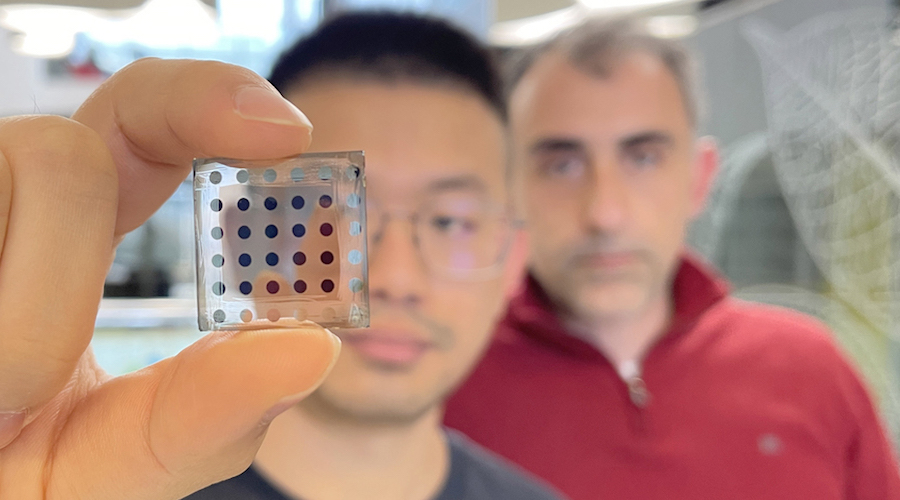
But even though they were a promising green alternative to silicon, these cells were still not capable of achieving compelling performance relevant for commercialization.
Scientists, thus, delved into ways to improve their performance and found that the optimal thickness of these semiconductor absorbers is closely linked to the absorption coefficients. This meant that they had to find an ultrathin solar cell capable of having a high absorption efficiency, quantum efficiency and ultimate performance while reducing cost, weight and manufacturing.
But, while aiming for an ultra-thin layered cell, dealing with light-trapping structures would add cost and complexity to the issue because the thinner the structure, the more complex it becomes to absorb energy.
This is where the new development comes in.
In a paper published in the journal Nature Photonics, the researchers – who are based at the Institute of Photonic Sciences in Spain, University College London, and Imperial College London – explain how they engineered a layer of nanocrystals in the cell with an unconventional approach called cation disorder engineering.
Finding order in disorder
In detail, they took the AgBiS2 nanocrystals and by using a mild annealing process, they were able to tune the atomic positions of the cations within the lattice to actually force a cation inter-site exchange and achieve a homogenous cation distribution.
By applying different annealing temperatures and achieving different cation distributions in the crystalline arrangement, they were able to show that this semiconducting material exhibits an absorption coefficient 5-10 times greater than any other material currently used in photovoltaic technology and, even more so, across a spectral range that covers from the UV (400nm) to the infrared (1000nm).
In the study, the experts point out that new surface chemistry was needed for this new material in order to preserve the optoelectronic quality of the nanocrystals upon annealing. Thus, they made use of mercaptopropionic acid as a passivant ligand.
“The importance of atomic disorder in emerging inorganic solar cells is currently a hot topic of discussion in the field,” Seán Kavanagh, co-first author of the study, said in a media statement. “Our theoretical investigations of the thermodynamics and optical/electronic effects of cation disorder in AgBiS2 revealed both the accessibility of cation re-distribution and the strong impact of this on the optoelectronic properties. Our calculations revealed that a homogeneous cation distribution would yield optimal solar cell performance in these disordered materials, corroborating the experimental discoveries as a testament of the synergism between theory and experiment.”
Thin and efficient
Kavanagh explained that with this result, he and his colleagues constructed an ultrathin solution-processed solar cell by depositing the AgBiS2 nanocrystals, layer-by-layer, onto ITO/glass, the most commonly used transparent conductive oxide substrates. They coated the devices with a poly triaryl amine solution and upon illuminating the device under artificial sunlight, they recorded a power conversion efficiency in excess of 9% for a device with a total thickness no more than 100 nm, 10-50 times thinner than current thin-film PV technologies and 1000 times thinner than silicon PVs.
One of the champion devices was then sent to an accredited photovoltaic calibration laboratory in Newport, USA, which certified conversion efficiency of 8.85% under AM 1.5G full sun illumination.
“The devices reported in this study set a record among low-temperature and solution-processed, environmentally friendly inorganic solar cells in terms of stability, form factor and performance,” co-author Gerasimos Konstantatos said. “The engineering of the multinary systems with cation disordered AgBiS2 colloidal nanocrystals has proven to offer an absorption coefficient higher than any other photovoltaic material used to date, enabling highly efficient extremely thin absorber photovoltaic devices. We are thrilled with the results and will continue to proceed in this line of study to exploit their intriguing properties in photovoltaics as well as other optoelectronic devices.”




